- HOME
- Technical Information
- TORELINA™ PPS Resin
- Various Properties
- Mechanical Properties
- Shear Properties
Shear Properties
Ⅰ. Shear Test
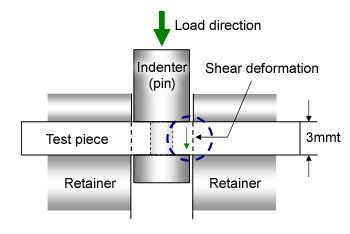 Fig. 5.51 Shear test method
Fig. 5.51 Shear test method
Shear properties are related to the force acting on a cross-section in such a way as to cause a shear. By fixing a tabular molded product and applying a load with a cylindrical indenter (pin), the maximum strength (stress) of the shear (shear deformation) generated at the boundary between the retainer and the indenter is determined. (Fig. 5.51) For self tapping for screw clamps, press fittings for metallic parts, or cutting of gates in molds, the shear stress can be used as a rough guide.
Table. 5.5 Shear properties of TORELINA™ (23℃)
| Item | Units | Glass fiber reinforced | Glass + filler reinforced | Elastomer improvement | Unreinforced | |||||
|---|---|---|---|---|---|---|---|---|---|---|
| A504X90 | A604 | A310MX04 | A610MX03 | A673M | A575W20 | A495MA2B | A900 | A670T05 | ||
| Shear strength | MPa | 80 | 80 | 60 | 65 | 66 | 68 | 66 | 64 | 58 |
- ※Strain rate: 1 mm/min
Ⅱ. Temperature Dependence
The temperature dependence of the shear strength of nine representative grades of TORELINA™ is shown in Figs. 5.52 to 5.55. The shear strength varies with the temperature, but unlike the other mechanical properties, differs little depending on whether reinforcement is used. The reason for this is assumed to be that the reinforcement effect of the reinforcement is small in comparison with shear deformation.
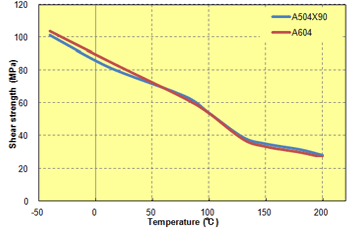 Fig. 5.52 Temperature dependence of shear strength (GF-reinforced)
Fig. 5.52 Temperature dependence of shear strength (GF-reinforced)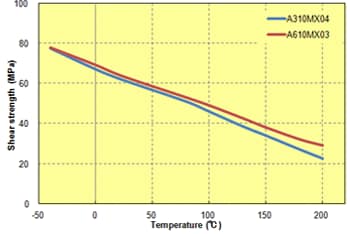 Fig. 5.53 Temperature dependence of shear strength (high-filler)
Fig. 5.53 Temperature dependence of shear strength (high-filler)
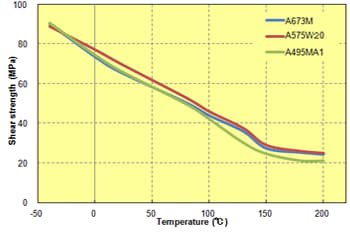 Fig. 5.54 Temperature dependence of shear strength (elastomer improvement)
Fig. 5.54 Temperature dependence of shear strength (elastomer improvement)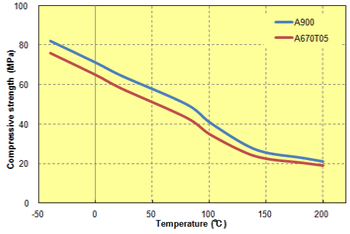 Fig. 5.55 Temperature dependence of shear strength (unreinforced)
Fig. 5.55 Temperature dependence of shear strength (unreinforced)